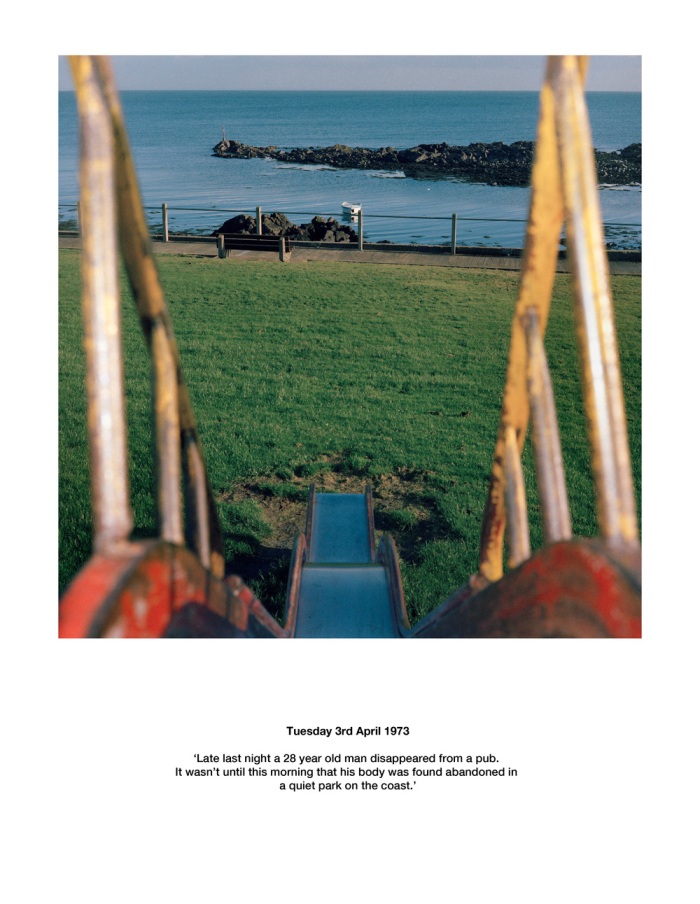It has taken until 2003 for the UK to come to terms with, or accept that photography also exists as a form of art, and not just as a way of recording information. It would be across the Atlantic in the United States that John Szarkowski would make the crucial breakthrough in conjunction with the Museum of Modern Art, showing us how art within photography had evolved over the last twenty years. Yet, so blinkered and narrow minded was our vision, that it took another twenty five years for us to accept this fact. In 2003 Tate Modern gave us its four exhibitions in five years, dedicated to photography alone. In that time we slowly came to realise that the camera/photographer only recorded a version of the truth. from here on it was easy to see and accept through small increments that photography was in fact a free standing form of art. In 2008 the Tates fourth exhibition was entitled Street & Studio, sub titled An Urban History of Photography It comprised of eleven rooms, each displaying various different concepts throughout photographic history, culminating with Street or Studio: A Photobook. Here, the audience were invited to contribute no more than two street or two studio images of their own. From these, one hundred were selected from a number of judges to go into a photobook. These images would also be on display in the Tate Modern in the form of a slideshow.
Reference: https://www.tate.org.uk/whats-on/tate-modern/exhibition/street-studio/street-or-studio-photobook
Sectarian Murders by Paul Seawright
Paul Seawright’s work is delivering a message, or rather, forcing us to ask questions about very divisive and emotive subjects, which are inextricably linked; Religion and politics! PS is very aware of how fine the line is that he has to tread too convey the message or provocation of thought through his work. As he says in his interview https://vimeo.com/76940827, If your work is too obvious and gives up it’s message too easily, then it becomes journalistic’. With journalism, you have a finite amount of time to get your message across, whether it be through the medium of TV, where there are the obvious time constraints, or through magazines, where the viewer always has the option to turn the page. Journalism can be a very blunt weapon! When presenting your work in a gallery, the viewer has already made the decision to take the time to ‘experience’ your work at their leisure. Therefore you are able/duty bound to make it more of a cerebral experience. The satisfaction often comes from having earned the reward! We don’t want to be told what to think, especially about something as delicate as religion, politics and death/murder, leave that to the clergy, politicians and murderers!

This series of images are produced in a square format which help to create a quiet and reflective feel to the images. Many of the images have very strong lines leading into the centre. This, coupled with the square format do little to encourage the eye to roam, instead focusing the mind on the message being delivered. Given the absence of what these images are primarily about, the square format keeps us focused even without the true subject matter. The images in this series are further polarised by the supporting text, which is taken from newspapers at the time, again giving brevity to what is being viewed and focusing the mind on the horror of what has taken place at these sometimes beauty spots.

PS is at heart an artist, after all, if he was just a journalist, ‘Sectarian Murders‘ would have been more effective and reached a wider audience by being published in a Sunday newspaper. All of the images in this body of work have an artistic element in them which brings a sense reflection and balance to the work. The message that PS wants to get out is a very powerful one indeed, but he chooses to put it out there through the medium of art, a very fine line to walk.
As PS says, his work needs to leave enough for the viewer to interpret, otherwise it becomes a work of journalism, a mere presentation. It could be argued that a subject as serious as this is being compromised by it’s presentation in an artistic way. By presenting it this way, the viewer is conditioned to expect to work for the result, and in doing so will reveal more to themselves. I found myself trying to imagine the loneliness of death on a bit of cold wasteland with no human contact, nobody to comfort you or console you , to put you at ease in any small way, maybe just being able to say ‘ I’ll find your next of kin (ensuring the correct burial/cremation etc).
In PS’s work ‘Sectarian Murders‘, the narrative provides and supports the context of the image. Much is made of supporting narrative by Roland Barthes in his book ‘Image Music Text‘¹, telling us about denotation, connotation, signifieds, its proximity to the image & and the relative duplicity of information shared between the image and the text. However most of what is said on these pages doesn’t strictly apply to this body of work. We have to bear in mind that this book was first published in 1977, prior to the common acceptance of photography as a form of art (beyond advertising), and so can more readily and clearly see that by providing us with the text & the title of the work(Sectarian Murders) PS is giving us an unquestionable and clear point from which to start our journey.
Exercise
See learning log about Sarah Pickering’s series, Public Order.